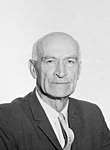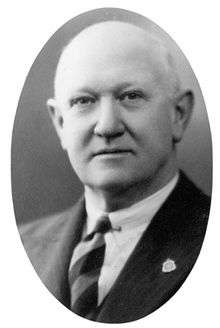1953 Western Australian state election
Elections were held in the state of Western Australia on 14 February 1953 to elect all 50 members to the Legislative Assembly. The two-term Liberal-Country Party coalition government, led by Premier Sir Ross McLarty, was defeated by the Labor Party, led by Opposition Leader Albert Hawke.
| |||||||||||||||||||||||||||||||
All 50 seats in the Western Australian Legislative Assembly 26 Assembly seats were needed for a majority | |||||||||||||||||||||||||||||||
|---|---|---|---|---|---|---|---|---|---|---|---|---|---|---|---|---|---|---|---|---|---|---|---|---|---|---|---|---|---|---|---|
| |||||||||||||||||||||||||||||||
| |||||||||||||||||||||||||||||||
The election was notable in that 22 of the 50 seats were not contested at the election. Only two other elections—those held in 1890 and 1894—had a greater percentage or number of uncontested seats.
Key dates
| Date | Event |
|---|---|
| 7 January 1953 | The Legislative Council was prorogued and the Legislative Assembly was dissolved.[1] |
| 23 January 1953 | Writs were issued by the Governor to proceed with an election.[2] |
| 30 January 1953 | Close of nominations. |
| 14 February 1953 | Polling day, between the hours of 8am and 6pm. |
| 23 February 1953 | The McLarty–Watts Ministry resigned and the Hawke Ministry was sworn in. |
| 27 February 1953 | The writ was returned and the results formally declared. |
| 6 August 1953 | Parliament was summoned for business.[3] |
Results
|
Western Australian state election, 14 February 1953 | ||||||
|---|---|---|---|---|---|---|
| Enrolled voters | 205,644[1] | |||||
| Votes cast | 192,225 | Turnout | 93.47% | +0.86% | ||
| Informal votes | 5,028 | Informal | 2.62% | +0.64% | ||
| Summary of votes by party | ||||||
| Party | Primary votes | % | Swing | Seats | Change | |
| Labor | 93,157 | 49.76% | +7.92% | 26 | + 3 | |
| Liberal and Country | 71,042 | 37.95% | –2.13% | 15 | ± 0 | |
| Country | 9,196 | 4.91% | –4.40% | 9 | ± 0 | |
| Ind. Lib. | 3,458 | 1.85% | –0.40% | 0 | – 2 | |
| Communist | 1,350 | 0.72% | +0.36% | 0 | ± 0 | |
| Independent | 8,994 | 4.80% | –1.35% | 0 | – 1 | |
| Total | 192,225 | 50 | ||||
- 1 319,941 electors were enrolled to vote at the election, but 22 seats (44% of the total) were uncontested—12 Labor seats (six more than 1950) representing 65,993 enrolled voters, 3 Liberal seats (one more than 1950) representing 14,297 enrolled voters, and 7 Country seats (three more than 1950) representing 34,007 enrolled voters.
gollark: It was 3D printed! In Minecraft!
gollark: I have a Triangle Authority badge too.
gollark: It's subjectively triangular.
gollark: I still consider it triangular.
gollark: > > > strictly forbidden to share our knowledge in any form> > Pretty triangular.> bruhBut yes, nobody, I do consider it pretty triangular.
See also
References
- "Prorogation of the Legislative Council and Dissolution of the Legislative Assembly. Proclamation". Western Australia Government Gazette. 9 January 1953. p. 1953:41.
- "The Electoral Act, 1907–1952. Legislative Assembly General Election, 1953". Western Australia Government Gazette. 23 January 1953. p. 1953:157.
- "Parliament Summoned to Meet for Business - Proclamation". Western Australia Government Gazette. 13 May 1953. p. 1953:983.
This article is issued from Wikipedia. The text is licensed under Creative Commons - Attribution - Sharealike. Additional terms may apply for the media files.

